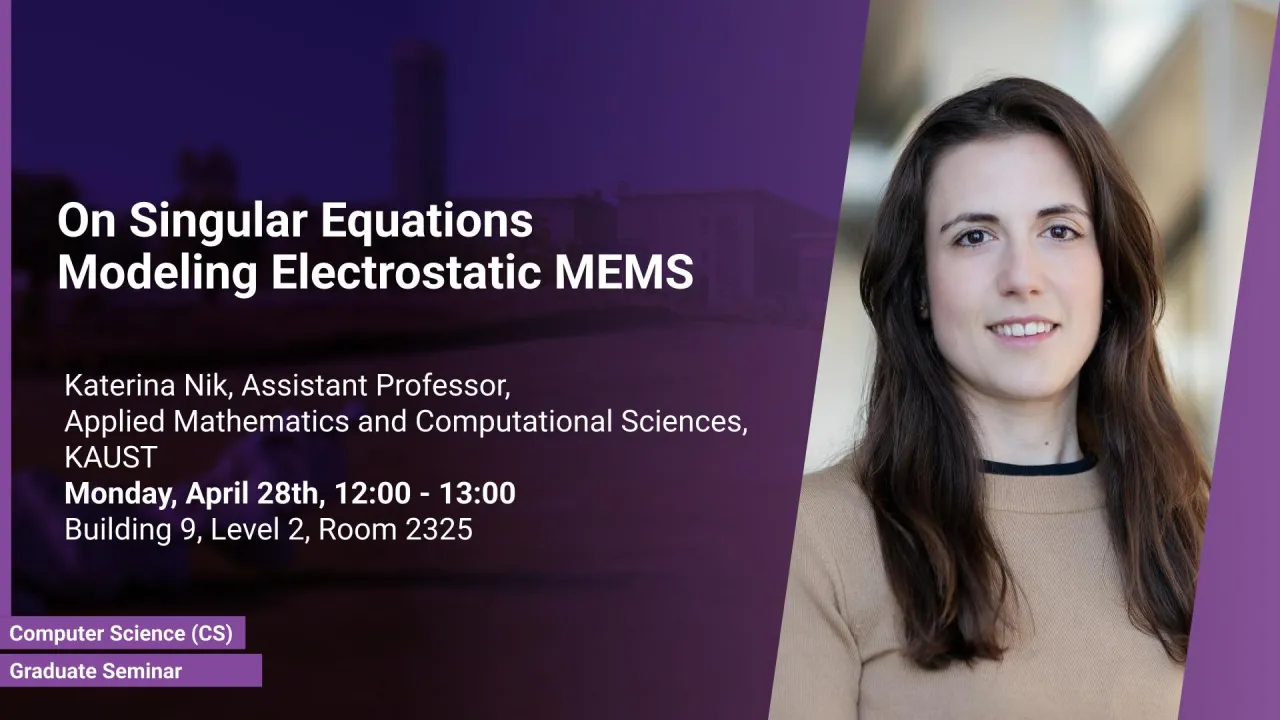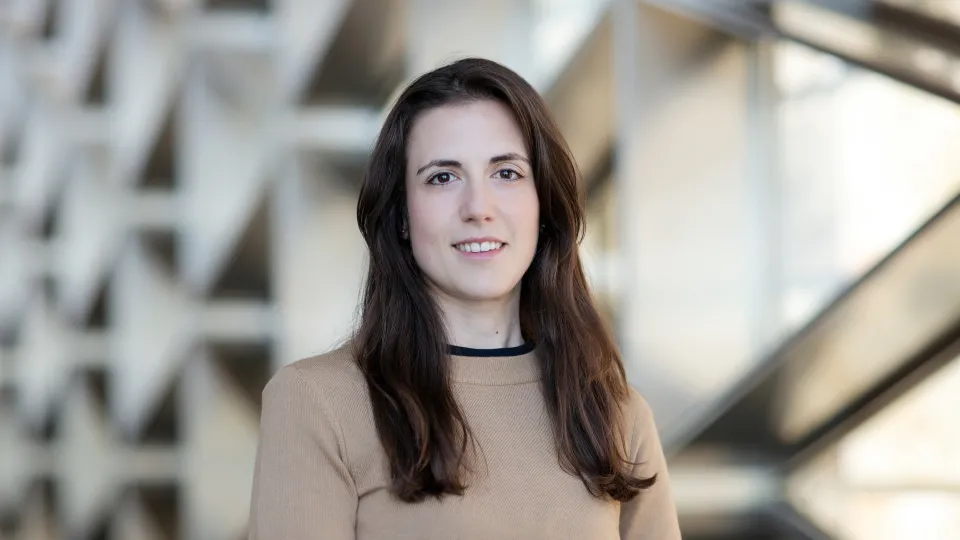
On Singular Equations Modeling Electrostatic MEMS
This talk introduces mathematical models for microelectromechanical systems (MEMS), focusing on the existence and behavior of solutions to equations describing the MEMS device's instability due to electrostatic forces that can lead to singularities in the mathematical equations.
Overview
In his famous lecture "There is plenty of room at the bottom" from 1959, Richard Feynman anticipated and popularized the growing need for micro- and nanostructures. Nowadays, microelectromechanical systems (MEMS) are key components of many electronic devices and have received considerable attention in both the engineering and mathematical literature over the past two decades.
Idealized electrostatic MEMS consist of a fixed ground plate, above which an elastic plate is suspended that deforms due to an applied voltage difference. Such devices suffer from a ubiquitous instability, which occurs when the top plate touches down on the ground plate, leading to singularities in the mathematical equations. A commonly used model to describe MEMS involves a plate equation with a singular source term, and this model is derived as a special case of a more complex singular free boundary problem. We give an introduction to MEMS models and their analysis, and in particular, we discuss the number of stationary and global-in-time solutions for the free boundary problem.
Presenters
Brief Biography
Katerina Nik is an assistant professor of Applied Mathematics and Computational Sciences (AMCS) in the Computer, Electrical and Mathematical Sciences and Engineering (CEMSE) Division at KAUST. Her work focuses on partial differential equations that describe phenomena in biological growth processes, fluid dynamics, and mechanical engineering. She joined KAUST in 2024 after contributing to research at prominent European institutions.
Prior to joining KAUST, Dr. Nik worked as a principal investigator at the Austrian Academy of Sciences, supported by the APART-MINT Fellowship, which enabled her to lead innovative research in applied mathematics. Before this, she was a postdoctoral researcher at the Delft Institute of Applied Mathematics, TU Delft, where she collaborated with Professor Manuel Gnann's group. She also served as a postdoctoral researcher at the Faculty of Mathematics, University of Vienna, Austria, working with Professor Ulisse Stefanelli from 2020 to 2024.
Earlier in her career, she was a research and teaching assistant at Leibniz University Hannover (LUH), Germany, where she completed her doctorate in mathematics. Her academic contributions during this period focused on nonlinear dynamics and the modeling of complex systems.
